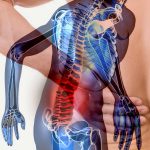Abacus Acupuncture
The Five Zang Channel System and Palmar Diagnosis
All of Master Tung’s points are classified according to the five elements (wu xing) and the five zang (wu zang) channel system. For example, in Tung’s acupuncture, the points located on the back are distributed along five lines. The five lines on the back are further divided into upper, middle and lower regions. Each region has its own five element classification. The fire points are used for treating diseases related to the heart; Earth points treat disorders related to the spleen; metal treats lung related issues; water points treat diseases related to the kidneys; and wood points treat liver related problems.
Master Tung’s palmar diagnosis is also based on the five elements and the five zang channel system. For instance, the line from the index finger to LU10 is the lung channel; from the middle finger to PC8 is the heart channel; from the ring finger to the wrist crease is the liver & spleen channels; and from the small finger to the wrist crease and the ulnar side of the palm is the kidney channel.3 Master Tung formulated a diagnosis mostly by observing abnormalities on the palm such as a blue vessel, redness, or discoloration. In this way he was able to determine the root cause of the disease, based on the five zang channels. Master Tung summarized this as follows, “If the diagnosis is exact, the location of points is accurate, and the needle technique is skillful, the result will be quick and successful. No other school of acupuncture can surpass its effectiveness.”4
In practice, Master Tung’s palmar diagnosis can be combined with the five zang pathomechanism of the Nei-Jing and the five zang diagnosis of the Nan-Jing. This way diagnosis will be exact and the method of selecting points according to the diseased channels, will deliver exceptional results. The following quotation from the Nei Jing provides some insight into the five zang pathomechanism:
“All wind [diseases characterized by] tremor and dizziness are associated with the liver; all cold [diseases characterized by] astringency and contraction are associated with the kidney; all qi[diseases characterized by] oppression and stagnation are associated with the lung; all dampness [diseases characterized by] swelling and fullness are associated with the spleen; all [syndromes characterized by] pain, itching and sores are associated with the heart.”5

